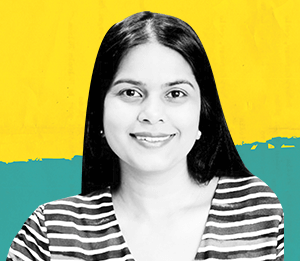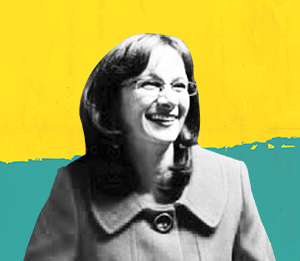
Shahina Pardhan, Director of Vision and Eye Research Unit (VERU), Anglia Ruskin University… On academia
On my first day as a university lecturer, I was barred from entering the senior common room because ‘secretaries were not allowed.” Back then, that’s what women in education were expected to be. Although I’m no longer the only female lecturer, academia itself is still far from equal. As with all professions, women struggle to juggle work with home life commitments, and often lack confidence in their own abilities. Perhaps it comes as no surprise then, that there are 4.5 times as many male professors as female professors in optometry in the UK – women simply aren’t represented in senior positions.
Studies have found that external hiring processes – like headhunting – are more likely to work against women who are very capable, but just don’t perform well in interviews. So what can we do about it? Ultimately, the impetus doesn’t just lie with institutions, it lies with individuals too. Women need to overcome the fraudulent or imposter image they have in their minds to reduce self-doubt, while men need to distance themselves from the ‘old boys’ network’ by actively reducing gender inequality. In some networks it is still possible to hear “I know just the man,” whenever a job becomes available – it only serves to keep women from positions of power.
Institutions also need to take into account how absences, such as maternity leave, flexible working patterns and caring responsibilities affect research performance during promotion processes. Differences between internal and external hiring processes can also be addressed by institutions spotting talented individuals early and nurturing their leadership skills.
It might sound daunting but you can do it – and don’t let anything or anybody try to stop you! If you start losing confidence, look at women around you for advice. It was only with the help of my family and line managers that I was able to break down some of the barriers in front of me.
Hugh Taylor, immediate past president of the International Council of Ophthalmology… On making change
As men, we have a responsibility to challenge ourselves – and those around us – to consciously think, “Who are the outstanding women in our field and why haven’t we asked them to join us?” One of the things I was most proud of during my time as president of the ICO was being recognized as a “Champion for Change” by the Women in Ophthalmology group. When I first started at the ICO, there was only one woman on the board. People used to describe the ICO Board as a group of old men and their grandfathers! This year, a quarter of our board members and a third of our committee are women. Studies have found that when you reach 34 percent – in our case, of women – on a board, in a committee or in a group – that’s when things start to change. We’re at the tipping point now.
It is equally important for women to take an active role by identifying people they see as leaders, or to nominate themselves for positions. If you are self-conscious about putting yourself forward, please don’t hesitate to nominate your peers or colleagues who are doing outstanding work. Don’t be intimidated, don’t be shy – just go for it.
I remember listening to female parliamentarians talk about party members making a conscious effort to consider female candidates for positions where previously they might have said: “There won’t be any women who would be interested in doing this, we will just look at the men.” But for greater involvement of women, you need women who are willing to put their hand up and show they are interested – that’s where women can take an active role.
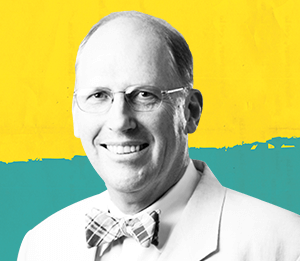
Laura Periman, Director of Dry Eye Services and Clinical Research, Seattle, WA, USA… On residency
When I started my residency, women were outnumbered 20 to one. Although my experience was positive overall, there were definitely times I felt left out by my male colleagues. I’m not just talking about the ‘guys’ poker nights’ I wasn’t invited to. It was the overt expressions of sexism – harassing comments that male colleagues simply wouldn’t get – that made me feel discounted. Motherhood was an issue, too. We had a couple of residents deliver while I was there and I was shocked at the disdain they incurred from the men: “How did you enjoy your vacation?” and “I can’t believe I had to cover your call.” Yet when two male residents required a leave of absence, it was met with phenomenal support. Why can’t pregnancy be met with the same? Of course, some discrimination was more subtle. Female residents were described as bossy, rather than assertive. Emotional, not passionate. Demanding, not precise. Unfortunately, it is still common to hear women addressed by their first name while men are referred to as “Dr” in clinic, on panels, and in internet colleague chat groups. I don’t think it is always intentional, but those words limit and diminish power – and I’m more comfortable in correcting it with collegiality and kindness. Things are moving in the right direction. There are more female residents than ever before and though there are still going to be problems in the next chapters – fellowship and private practice versus academia – and the different glass ceilings that exist, we have a chance to make it easier for them. The way to do it is through feel-good stuff, putting a spotlight on heart-first leadership – like the kind championed by OWL, who acknowledge and award supportive leaders. I am fortunate enough to have had the support of many wonderful colleagues – including my friends at the Cedars/Aspens group. These men are some of the most collegial and collaborative I’ve ever worked with, and they deserve to be recognized.
While serving on mentorship panels at Millennial Eye 2018 this fall, I was delighted by our young ophthalmologists’ egalitarian and meritocratic world views and supportive attitudes and actions towards each other. We have a golden opportunity to support the future leaders of our field and I feel a personal responsibility to help smooth the way. The future looks bright indeed.
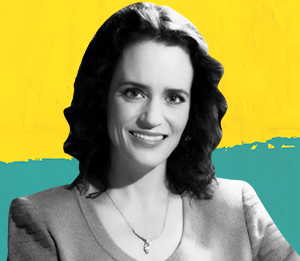
Cynthia Matossian, Founder and Medical Director of Matossian Eye Associates, Mercer County, New Jersey, and Bucks County, Pennsylvania, USA… On saying yes
The most obvious discrimination I ever experienced came from the former owners of my practice. I was buying the ophthalmology section from two EENT brothers. The sale progressed as normal – until it came to signing the definitive purchase contract. They refused to honor my signature because I was a woman. My husband (who had nothing to do with medicine, let alone ophthalmology) had to countersign. And this didn’t happen in some small conservative town – this was New Jersey in 1987! Thankfully, things have changed for the better.
Women are now taking on leadership roles within academic institutions, in private practices, writing articles, moderating panels, and are active at the podium with presentations. The visibility of women at conferences as a whole has dramatically increased. There is an understanding that diverse, inclusive teams approach problem solving in more creative ways than homogenous groups. People in leadership roles are becoming more cognizant of gender differences as they build their management teams.
Being more proactive also makes a difference. Take speaking opportunities, for example: women are more likely to wait for an invitation than to ask for an opportunity. I remember a discussion with one of my male colleagues regarding speaking roles and how one goes about getting invited. He said, “All you have to do is ask!” So I took his advice to heart and started to put myself forward, saying: “I’m very interested in participating in this meeting, and if there’s an opportunity to speak, please let me know.” Once I put my feelers out, the invitations followed suit. So to women starting their careers, know that many women ahead of you have charted the path to success. If you have the initiative and the desire, the sky’s the limit.
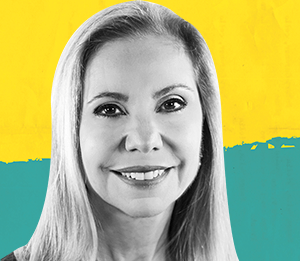
Michelle Cabrera, Associate Professor of Ophthalmology and Associate Director of Medical Student Education for Research at the University of Washington and Seattle Children’s Hospital… On #MeToo in Ophthalmology
Fifty-nine percent of female ophthalmologists in the United States experience sexual harassment at some point during their careers. Although many incidents occur after training, most victims are medical students or residents – and I was once one of them. I was in the patient room during my residency when an attending touched me inappropriately. At first, it seemed like an accident, but when it happened multiple times on multiple days, I realized it wasn’t. I found out he had done the same to others in my department. Many laughed it off, but some were so impacted by his behavior that they changed careers. A decade passed and I learned the attending was still harassing residents – and the incidents were escalating. I realized then that by not speaking up sooner, I was paving the way for others to be victimized, many more vulnerable than I was. So this year, a handful of us spoke out and the attending stepped down from his position.
It is fair to say 2018 has shifted the needle on how we view sexual harassment as a society. We have realized that we can no longer stay silent when it comes to abusive behaviors. We need to speak out. By doing so, we make victims of harassment feel less alone, support their efforts to expose the wrong-doing of the perpetrator and, ultimately, stop the harasser from harming others. We need to do the same in ophthalmology. We can start by adopting a zero-tolerance policy on sexual harassment in our workplaces and in our national organizations. Policies should also be put in place to investigate and handle complaints and to support victims.
On an individual level, we need to start speaking up for victims. If you witness or learn about cases of sexual harassment, encourage the victim to report the incident and take action to support the victim – it is the only way to send a clear message to the harasser and others that this behavior is not acceptable. I feel hopeful that we, as a field, can accept the reality of what is happening all around us. Only when we do that, can we improve the lives of women in ophthalmology.
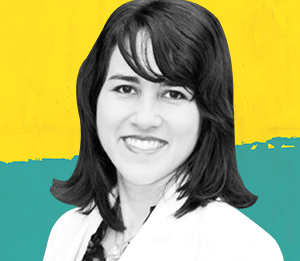
Mariya Moosajee, co-founder of Women in Vision UK and consultant ophthalmologist at Moorfield’s Eye Hospital… On representation
Whilst I was a senior house officer in neurosurgery, I had lunch with my consultant in the hospital canteen. He said to me, “Look around. Why do you think there are no female consultants here?” I said I didn’t know.
“It’s because your hormones will kick in and you will go off to have children,” he said. My reply: “Yes. And they'll be back, so what’s the big issue?”
These are the attitudes we are fighting against today. Being a mother shouldn’t preclude you from being a consultant in a field, no more than being a woman should stop you from holding a senior position. But if you look at all the boards, they’re almost entirely male… Male chief executives, male finance directors, male medical directors. In fact, 75 percent of consultant ophthalmologists in the UK are men. Some people believe that 25 percent being women is a good statistic, but I don’t. We’re drowning in senior male figures.
If you look at the applications for clinician scientist fellowships, you see a disproportionate number of applications from men, and thus, a much higher proportion of successful men. Look at ethnicity: it is hugely weighted towards Caucasians. Ultimately, it’s fine to publish these findings and say we’re in support of a more representative workforce, but unless we start to see change, we’re just condoning it.
And that’s the stage we’re at now. To truly change things, we need to face up to the fact we’re self-selecting for this specialty. It’s not as if women are not qualified for these jobs; they simply don’t have the same networks or opportunities as men. If we want equality and fairness, both men and women need to work together for change.
